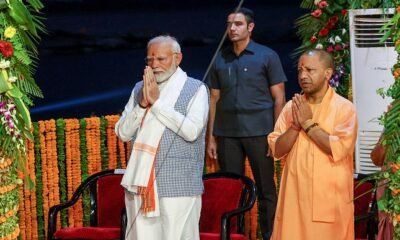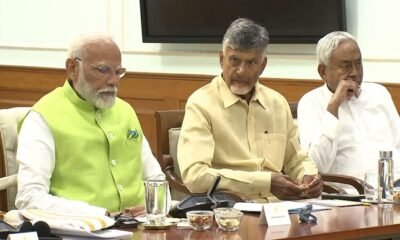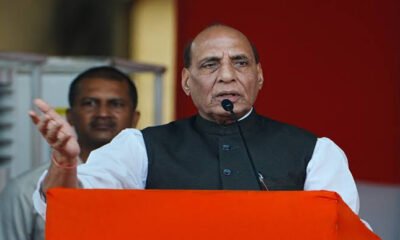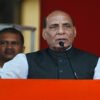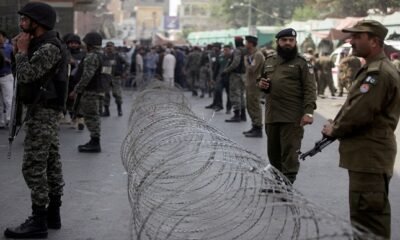National
Contemporary Nuclear Non-Proliferation Landscape: Implications for India
The AUKUS strategic relationship between Australia, the United Kingdom, and the United States has caused a commotion that can be heard from the Indo-Pacific to the Atlantic. Canberra is relieved, Beijing is outraged, Paris is irritated, and Southeast Asia is terrified as Washington plans to hand up its tightly guarded nuclear submarine technology. In New Delhi the reaction has been a blend of good and bad. The only direct remark on AUKUS came from Foreign Secretary Harsh Shringla, who suggested the deal was a strategic alliance among the three Anglo-Saxon powers and therefore irrelevant since it would have no impact on the functioning of the Quad.
To discuss more on this issue, Red Lantern Analytica, a Delhi based think tank, on 27th of October had a conversation with their guest of honour, and an eminent nuclear expert Dr. Manpreet Sethi, Distinguished Fellow, Centre For Air Power Studies, New Delhi.
Dr. Sethi discussed on “Contemporary Nuclear Non-Proliferation Landscape: Implications for India.”
Dr.Sethi pointed out that for at least the last 10 years, it was globally believed that nuclear weapons will slowly fade out from national security strategies and more proliferation will not happen. However, this is not where we are presently at. The norms of both non-proliferation as well as the norm of non-use of nuclear weapons both seem to be under severe threat but caught as we are, especially in our region with concerns of geopolitics and geoeconomics that is arising with the rising of a state in the neighborhood, which seems to be treading on those of many, many countries, including that of India. The focus of non proliferation seems to have dissipated.
Dr. Sethi explained the new developments in non proliferation by demonstrating the doomsday clock, which gives a graphic representation of what is the state of the nuclear danger that the world is facing right now. So the Bulletin of Atomic Scientists, which is an organization from Washington DC, that brings out a journal every month. In January of every year, they revise the time on this clock. So the closer we are to midnight, the dangers from the nuclear weapons dimension and the possibility of use of the nuclear weapon is much more. And now, we are 100 seconds to midnight.This time was revised in January this year and this is the closest that we have ever been to midnight, which means the end of the world.
While speaking about the importance of nuclear weapons in national security strategies, Dr Sethi remarked, that has actually increased in the last few years, and nobody seems to be in a mood for disarmament. The contemporary challenges to nuclear non-proliferation is in both the dimensions, vertical as well as horizontal. Vertical non-proliferation means increase in nuclear numbers and modernization of the arsenal.On the horizontal front more countries being able to acquire nuclear weapons.The nine nuclear armed states face heightened threat perception from each other, each is assuming the worst of the other, there are no strategic dialogues that are happening between them. All these countries are involved in nothing but an offence-defense spiral against each other’s assumed capabilities.
Though the “Treaty on prohibition of production, testing, possession, stock filing, transfer etc. of nuclear weapons” or simply the Ban Treaty, adopted in the UNGA on 7 July 2017, has come into force, yet, disarmament doesn’t seem to be on the horizon and it has no support from the nine nuclear armed states.
Thus, nuclear weapons are here to stay. India considers them as a necessary evil given the sensitive security environment around us. If all move towards elimination of nuclear weapons through multilateral treaty then India will give up its nuclear.
She remarked that now the relation between countries is no longer bipolar or straightforward as it used to be during the cold war between the US and USSR”. At the nuclear level everything is rather fashioned in chain relations. For instance, in the South Asian region between India and Pakistan cannot but take into account what China is doing and China will have to look at what the US, Russia, other countries are doing and therefore everything spirals into a chain conundrum at the nuclear level. So it’s not possible to find regional solutions alone. For the kind of global chains that have evolved in the nuclear dimension, these are also times of strident nationalism where each country is thinking about its national interests before international peace and security concepts. In this situation, India faces the risk of being stuck into an arms race. It crafted a nuclear doctrine for itself in 1999. This doctrine says that we are going to build a small arsenal with what we call credible minimum deterrence, and that we will exercise deterrence by the idea of punishment.So because the weapon is of a nature that can cause large scale damage, India will build small numbers, but will ensure massive retaliation to the other side if they use their nuclear weapons against us.
Acts of nuclear terrorism is also a major concern for India, apart from which, India has China as the master puppeteer of the relationship that the US would have with North Korea on the one hand, it sort of takes a hands off approach and says it is something between US and North Korea to resolve and at the same time it keeps propping up North Korea as a nuclear adversary. So, in order to create complications on US security, we find a rather complicated problem here with North Korea and how it implicates India.
Talking about the Joint Comprehensive Plan of Action, Dr. Sethi remarked that it is still in jeopardy. This is what is loosely known as the Iran deal that was signed in 2015. And the idea of this deal was that you would put a stop to how Iran could do either uranium enrichment or plutonium production and reprocessing. But unfortunately, Trump withdrew from the JCPOA in 2018, and as a result of that, Iran has been undertaking steps at withdrawing from the TPP. For a long time, Iran hung on hoping that the European Union would be able to bring the US back into the deal, but that did not happen. And then Iran started taking steps from withdrawing, going back on the commitments that it had taken as part of. India is interested in Iran for both economic as well as strategic reasons. So, after the US withdrawal from the JCPOA, India had to reduce its engagement with Iran because of its relationship with the US. This had implications for our oil availability because we were taking nearly 11% of our oil imports from Iran when we had to start reducing them, and we have had to do a tightrope walking between US and Iran, as both these countries are important to us from the economic and the strategic point of view.
About the implications of AUKUS on India, Dr. Sethi remarked, that since China is currently our greatest adversary, it needs to be countered. Therefore the AUKUS will distract China and it will complicate security. And India as a member of that quad will be happy to see Australian capacity is being built up even though there is not so much a military dimension on board. Dr. Sethi remarks that though India might gain from what the AUKUS is doing, on the other hand we could end up being the loser if we have more assassins in our neighborhood.





